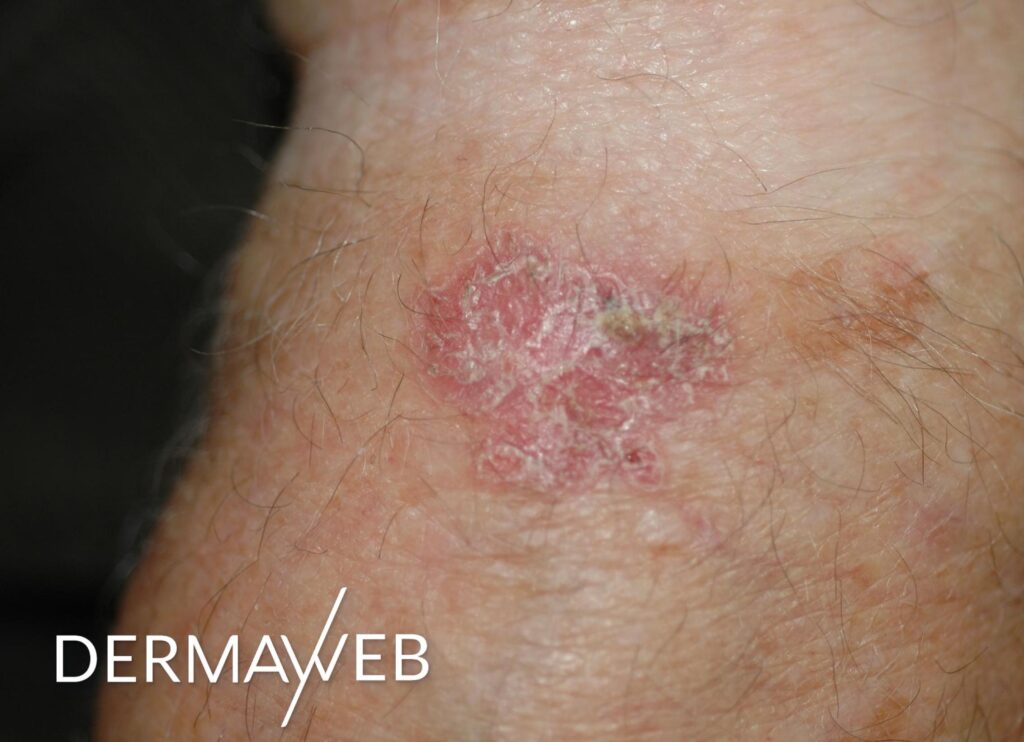BD is an intraepithelial squamous cell carcinoma (in situ). The population most concerned is the 7th decade and the female sex. The genital forms are strongly linked to human papillomaviruses (HPV).
From an anatomopathological point of view, the epidermis is disorganized and made up of atypical keratinocytes throughout its thickness, but which, by definition, do not cross the basement membrane.
Bowen’s disease can progress in 3 to 5% of cases to invasive carcinoma, in very variable time frames. And it is readily associated with other cutaneous carcinomas (basal or squamous cell). Hence the importance of performing a complete skin examination to look for other cancerous or precancerous lesions.

Diagnosis
Talking about Bowen’s disease (squamous cell carcinoma in situ) on a clinical basis can be difficult.
In the presence of this single lesion located in a photo‐exposed area, with an erythematocrustous disc appearance, well limited, with a scalloped border and a very slow evolution in an elderly patient, the diagnosis of Bowen’s disease should be cited as a first line of treatment.
Diagnostic confirmation is obtained by biopsy. Some general practitioners perform this procedure. Otherwise, the patient must be referred to a dermatologist who will take care of the biopsy and who will then organize the treatment (in case of diagnostic confirmation).
Treatment of Bowen’s disease and carcinomas in situ
- Small lesion: 2 options:
– excision with histopathological control,
– “aggressive” cryotherapy (optimal freezing time: 10, 20, 40 sec?), under 3 conditions:
- avoid treating legs and areas of precarious trophicity,
- verification of the diagnosis by biopsy,
- possibility of subsequent follow-up.
2. If surgery and cryotherapy seem difficult (extensive or multiple lesions or poorly healing areas): local chemotherapy: 5-FU, PDT, imiquimod with 2 conditions: diagnostic verification by prior biopsy and post-treatment monitoring.
3. You should take advantage of the time of this consultation to insist on photoprotection measures with your patient. The recommendations of the American Academy of Dermatology are:
- Seeking shade;
- Avoid exposure from 10 a.m. to 4 p.m.;
- Wear a sunscreen with an SPF (“sunburn protection factor” = sun protection factor) of at least 15, 15 to 30 minutes before exposure and reapply every 2 hours outdoors even on cloudy days;
- Wearing light, long, tightly knitted clothes, wide hat;
- No tanning outdoors or in a UV booth.
4. Inform the patient that regular lifelong monitoring is necessary, in order to detect recurrences or the appearance of another skin tumor early.
